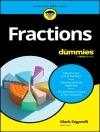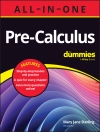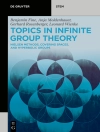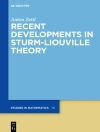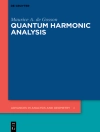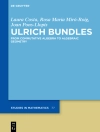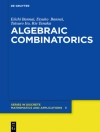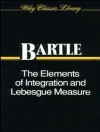This monograph is designed to be an in-depth introduction to domination in graphs. It focuses on three core concepts: domination, total domination, and independent domination. It contains major results on these foundational domination numbers, including a wide variety of in-depth proofs of selected results providing the reader with a toolbox of proof techniques used in domination theory. Additionally, the book is intended as an invaluable reference resource for a variety of readerships, namely, established researchers in the field of domination who want an updated, comprehensive coverage of domination theory; next, researchers in graph theory who wish to become acquainted with newer topics in domination, along with major developments in the field and some of the proof techniques used; and, graduate students with interests in graph theory, who might find the theory and many real-world applications of domination of interest for masters and doctoral thesis topics. The focusedcoverage also provides a good basis for seminars in domination theory or domination algorithms and complexity.
The authors set out to provide the community with an updated and comprehensive treatment on the major topics in domination in graphs. And by Jove, they’ve done it! In recent years, the authors have curated and published two contributed volumes: Topics in Domination in Graphs, © 2020 and Structures of Domination in Graphs, © 2021. This book rounds out the coverage entirely. The reader is assumed to be acquainted with the basic concepts of graph theory and has had some exposure to graph theory at an introductory level. As graph theory terminology sometimes varies, a glossary of terms and notation is provided at the end of the book.
Mục lục
1. Introduction.- 2. Historic background.- 3. Domination Fundamentals.- 4. Bounds in terms of order and size, and probability.- 5. Bounds in terms of degree.- 6. Bounds with girth and diameter conditions.- 7. Bounds in terms of forbidden subgraphs.- 8. Domination in graph families : Trees.- 9. Domination in graph families: Claw-free graphs.- 10. Domination in regular graphs including Cubic graphs.- 11. Domination in graph families: Planar graph.- 12. Domination in graph families: Chordal, bipartite, interval, etc.- 13. Domination in grid graphs and graph products.- 14. Progress on Vizing’s Conjecture.- 15. Sums and Products (Nordhaus-Gaddum).- 16. Domination Games.- 17. Criticality.- 18. Complexity and Algorithms.- 19. The Upper Domination Number.- 20. Domatic Numbers (for lower and upper gamma) and other dominating partitions, including the newly introduced Upper Domatic Number.- 21. Concluding Remarks, Conjectures, and Open Problems.
Giới thiệu về tác giả
Teresa W. Haynes has focused her research on domination in graphs for over 30 years and is perhaps best known for coauthoring the 1998 book
Fundamentals of Domination in Graphs and the companion volume
Domination in Graphs: Advanced Topics. She has also co-edited 2 volumes in Springer’s
Problem Books in Mathematics
Graph Theory: Favorite Conjectures and Open Problems. Haynes is also a co-author of the
Springer Briefs in Mathematics
From Domination to Coloring: The Graph Theory of Stephen T. Hedetniemi. Upon receiving her Ph D from the University of Central Florida in 1988, she joined East Tennessee State University, where she is currently professor in the Department of Mathematics and Statistics. Haynes has coauthored more than 200 papers on domination and domination-related concepts, which introduced some of the most studied concepts in domination, such as power domination, paired domination, double domination, alliances and broadcasts in graphs, and stratified domination.
Stephen T. Hedetniemi is one of the earliest pioneers of domination in graphs along with E. J. Cockayne, who together proposed the theory of domination in graphs, in one of the most cited papers in the field in 1977. He received his Ph D from the University of Michigan in 1966, with two world-class advisors, graph theorist Frank Harary, and the pioneer of genetic algorithms and Mac Arthur Fellowship winner, John Holland. He coauthored, the first book on domination in 1988
Fundamentals of Domination in Graphs, and co-edited a second book,
Domination in Graphs: Advanced Topics. He also co-edited 2 volumes in Springer’s
Problem Books in Mathematics
Graph Theory: Favorite Conjectures and Open Problems. Since 1974 he has coauthored more than 300 papers, 180 of which are on domination and domination-related concepts. Hedetniemi has introduced some of the most-studied concepts in domination theory, including total domination, independent domination, irredundance, Roman domination, power domination, alliances in graphs, signed and minus domination, fractional domination, domatic numbers, domination in grid graphs and chessboards, the first domination algorithms, the first domination NP-completeness results, and the first self-stabilizing domination algorithms. After leaving the University of Michigan, he taught computer science at the University of Iowa, and the University of Virginia, spent a visiting year at the University of Victoria with E. J. Cockayne, and then became department head of Computer and information Science at the University of Oregon. Since 1982 has been at Clemson University, where he served a five-year term as department head, and served on the Executive Committee of the Computing Accreditation Commission of ABET, Inc. He is currently Emeritus Professor of Computer Science in the School of Computing at Clemson University.
Michael A. Henning has devoted much of his research interests to the field of domination theory in graphs. He has been both plenary and invited speakers at several international conferences and is a prolific researcher having published over 460 papers to date in international mathematics journals. Henning was born and schooled in South Africa having obtained his Ph D at the University of Natal in April 1989. In January 1989, he started his academic career as a lecturer at the University of Zululand, before accepting a lectureship in mathematics at the former University of Natal in January 1991. In January 2000, he was appointed a full professor at the University of Natal, which later merged with the University of Durban-Westville to form the University of Kwa Zulu-Natal in January 2004. After spending almost 20years at the University of Kwa Zulu-Natal and one of its predecessors, the University of Natal, Michael moved to the University of Johannesburg in May 2010 as a research professor. Most recently he co-authored a unique and stunning textbook in the Springer Optimization and its Applications series titled Graph and Network Theory. He co-authored a Springer Briefs in Mathematics From Domination to Coloring: The Graph Theory of Stephen T. Hedetniemi and co-authored the Springer Monographs in Mathematics book Total Domination in Graphs and in 2020, he co-authored Springer’s Developments in Mathematics book Transversals in Linear Uniform Hypergraphs.


